Many times you run across recipes that are written in percentages. These are great because you can convert them into workable recipes for any size of mold or production.
Sometimes the process of converting percentages to the recipe size that you need can be confusing. Let’s walk through it.
http://www.brambleberry.com/10-Silicone-Loaf-Mold–P5199.aspx?afid=5
I’ve got this nifty silicone mold from Bramble Berry. After checking out the website I see that it holds 50 oz of soap and measures 10″ x 3 5/8″ x 2.25″. Before I convert my recipe from percentages to ounces…I need to know the amount of oil that it holds.
50 oz of soap means it holds 50 oz of finished soap (water + lye+ oils). I need to know how much oil it will hold so I can convert my percentages to ounces of oils.
I use the formula l (length) x w (width) x h (height) x .4 to determine how many ounces of oil my recipe needs to be.
So for the BB loaf mold:
10 x 3.625 x 2.25 x .4 = 32.625 oz
I like to do fluffy tops so I will add about 4 extra ounces so I have enough soap on top.
My recipe needs to contain 37 oz of oils.
My recipe in percentages looks like this:
Olive oil – 50%
Coconut oil – 32%
Shea butter – 8%
Avocado oil – 8%
Castor oil – 2%
To convert the above percentages you will multiply each ingredient’s percentage by 37 oz which is your total oils needed (or the 100%).
Olive oil – 37 x .5 = 18.5 oz
Coconut oil – 37 x .32 = 11.84 oz
Shea butter – 37 x .08 = 2.96 oz
Avocado oil – 37 x .08 = 2.96 oz
Castor oil – 37 x .02 = .75 oz
So your oils needed will be:
Olive oil – 18.5 oz
Coconut oil – 11.84 oz
Shea butter – 2.96 oz
Avocado oil – 2.96 oz
Castor oil – .75 oz
Run this through a lye calc to get the lye amount needed.
Lye – 5.28 oz (5% SF)
I double my lye amount to get my water amount. (Ignore the water amount the lye calc gives you.)
Water – 10.56 oz
So my final recipe is:
Olive oil – 18.5 oz
Coconut oil – 11.84 oz
Shea butter – 2.96 oz
Avocado oil – 2.96 oz
Castor oil – .75 oz
Lye – 5.28 oz
Water – 10.56 oz
This recipe will make a total of 52.85 oz of soap.
BB’s site states that the mold will hold 50 oz…so we’re good! I always prefer to have a bit extra than not enough.
If you want extra to make higher peaked soap…then calculate for extra soap.
Happy Soaping!
Amanda

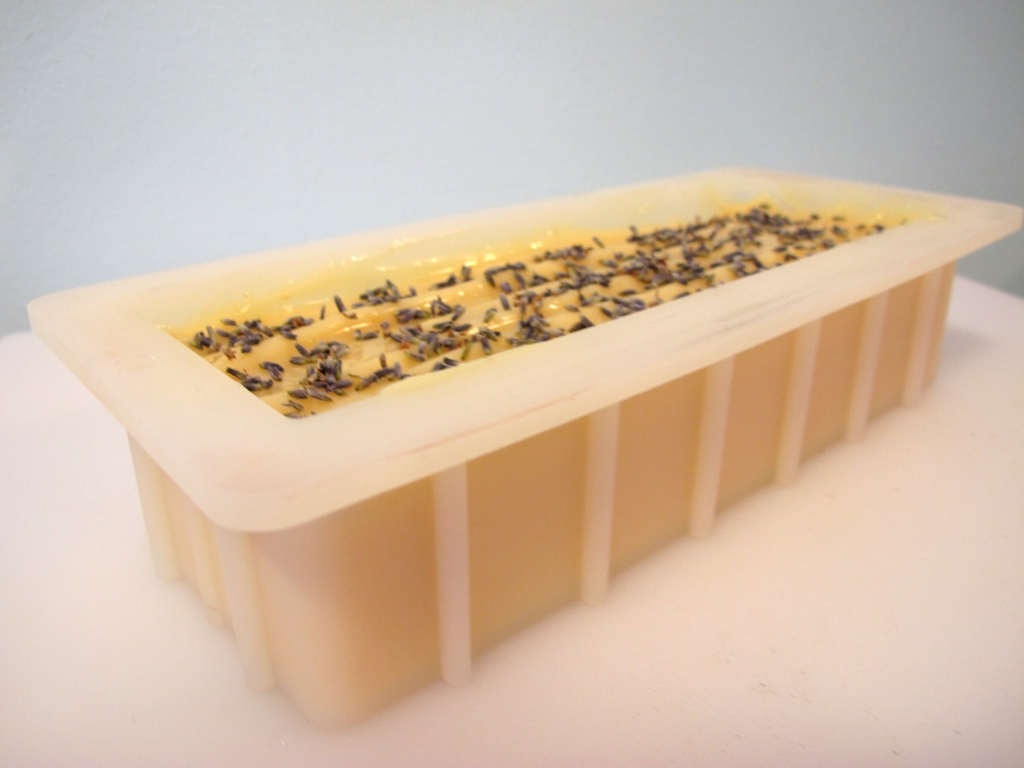
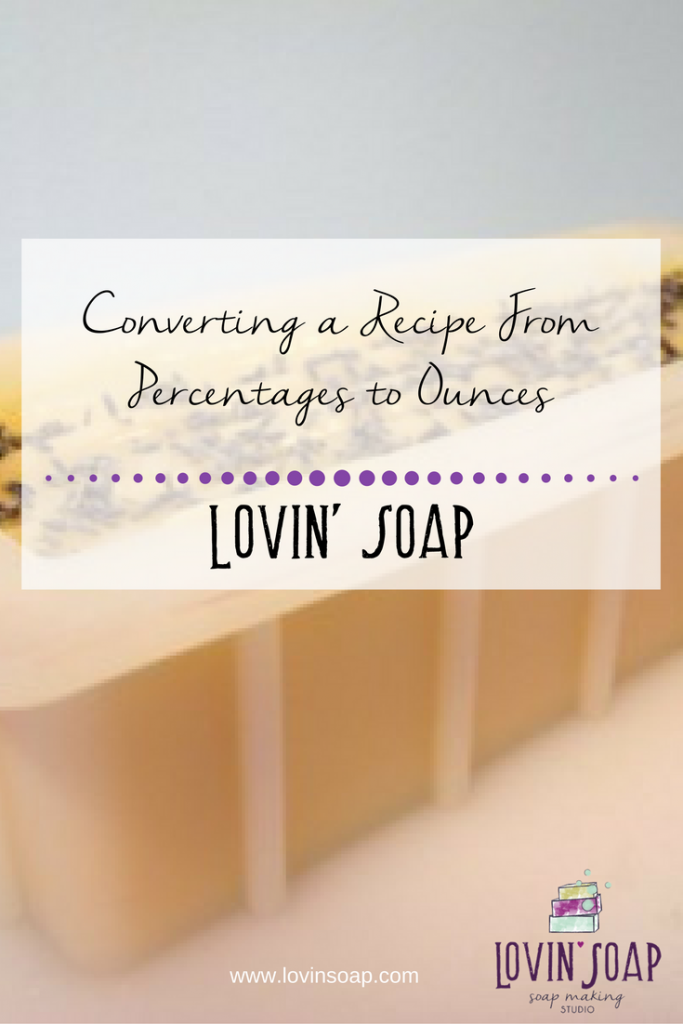

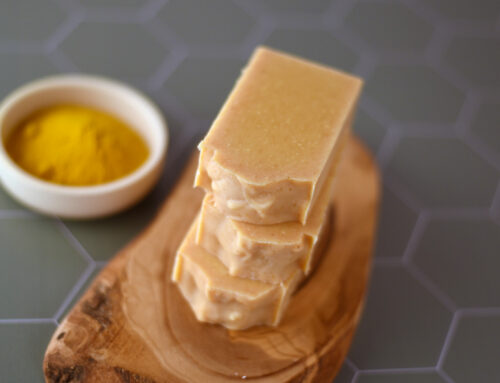
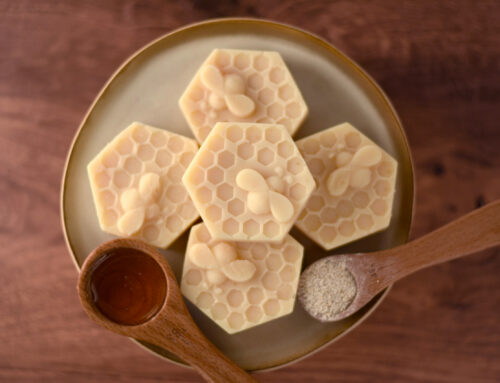
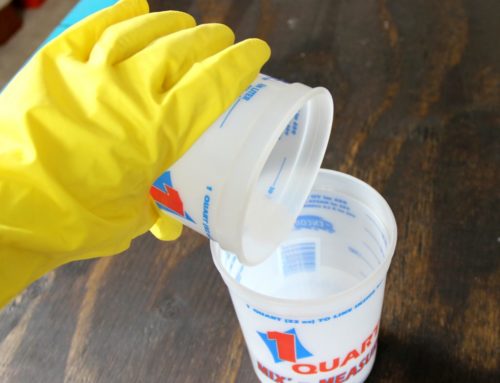

Good day, I am newbie in soap making, and I have struggled so much in creating and formulating a soap recipe for production. Even this conversion from percentage to ounces I don’t really understand it…… Please I need an online mentoring…..
Hey my suggestion is to use soapcalc.net. They have a recipe calculator that allows you to set the amount of oils and what kind of oils and all of the like. Say you want to use 30oz of oils, 5% super fat, 0.5oz of fragrance, and then tell it the type of oils you want such as olive oil at 20%, coconut at 30%, etc. After you plug in everything you hit calculate and it does the work for you. If something is off, it will tell you. This is what helped me in learning a LOT. It also has helpful links to differences in oils and their properties. Happy soaping!
If you drop your water discount amount in the soap calc, it will calculate less water for your recipe. I’ve been using 25 to 28 instead of 38% which is the default for soap calc. Tree Marie on you tube gives a great lesson on understanding the soap calc and tweaking all the amounts and why. There was a loaf she made by changing water amounts of the center and both sides. It was beautiful. It makes a tremendous difference. She also uses the 0.4 in estimation of amount of oils for your container also with some great other tips. Thanks for the formulary for finding oz. to percent.
Hello thank you the break down. Just wondering, how did you get 37 oz for oils to do the conversion and also when I measured my L x W x H it showed 183.75, however when I put in the .4 my total showed 73.5 oz. it seemed to have reduced the amounts in all my measurements after adding the .4. I’m definitely not a math person so if you are able to shed some light on this I would be very appreciative. Thanks again.
Ps my measurements are 17.5×3.5×3= 183.75 but once is do x.4 it says 73.5. I don’t under🙈
Being new to soaping this is part that confused me,you explained it so simply i finally can convert my recipes, thank you,.
Hi,I know this question is coming forth again and again cuz I noticed you did not get to answer it.I really need this answer pls. where is the .4 coming from?do not neglect again I beg of you .
Hello,I check your new stuff named “Converting a Recipe From Percentages to Ounces – Lovin Soap Studio” regularly.Your story-telling style is witty, keep up the good work! And you can look our website about proxy list.
This might seem like an easy enough answer to some but please humour me. Measuring in ounces I find is not straight forward. The measurement for ounces by weight and volume is different. If I use a digital measuring scale and set it to oz will this give me the correct water amount as stated in your recipe or I need to derive it differently. I find that some soapers will specify in their recipes that all measurements are by weight or volume. What exactly does this mean and can my digital scale measure so?
Soap ingredients should always be measured using weight and not volume. 🙂
Amanda
When I recently tried using a “water discount” it traced so fast I had no chance to do anything! I’m guessing it was too much of a discount? I’ve been relying on the calculators and now I have one that is still soft after 24 hours. i am going to try your method tomorrow, thank you!
My recipe calls for 30% lye what is it in crystal form and how much water can be used?
I need a chart to convert grams to oz’s I’m to old to learn new tricks.
Does the extra .4 equate to 4% superfat?
Thank you so much for this. All of this makes perfect sense except the .4, I don’t understand why you multiply the volume of the container by .4?
Hi. This has been so helpful to me. However, like others, where does the .4 come from? Thanks!
Why did you multiply the volume of the container by 0.4? Are taking 1 cubic inch of oil to be equivalent to 0.4oz ? Most vegetable oils average around 0.5 oz/cubic inch. Are you underestimating so you don’t overfill your container because you need to account for the water that will be added?
When I find SUPER helpful info on the internets, I like to pop on and say thank you. So, THANK YOU!! Pinning this for future reference and then others may find it useful as well. Cheers 🙂
Thanks a ton… Makes total sense now.
Great info, simplified!!
One question is in the BB lye calc what super fat % would you recommend??
I tried the above amounts with diff % in the super fat column but didn’t get the amount of 5.28 as lye amount
Could you please suggest the % or what would your recommendation be??
Thanks!!! 🙂
I recommend a superfat of 5-8%.
This is really helpful when I first started making soap I struggled to get my head around that forumla, especially since in the UK we use gramms. Once I got a good set of digital scales that measures in oz it was so much easier to work out how much oil to use.
So would that water ratio to lye just be 2:1? I just normally use the lye calculator recommendation, but would this need less time to cure?
Hi, this is VERY useful, thank you. Please can I ask, you say ‘I use the formula l (length) x w (width) x h (height) x .4 to determine how many ounces of oil my recipe needs to be.’ Please can you tell me what the .4 is? You state after it that you add 4oz for the fluffy top but I don’t understand what the initial .4 is in the formula. Thank you.
Thank you so much. This post was extremely helpful and easy to follow.
Very useful . Thank you, thank you, thank you !
Why do you multiply the lye by two to get the amount of water & ignore the lye calculator’s amount of water? Just courious?
Hi! I do it to simplify things. It’s easy to remember. The standard amount on lye calcs is usually more water than what I prefer and makes a softer soap that needs a longer cure. The standard lye water ration on soapcalc is 3:1 and that is just too high.
Wonderful job explaining a how to convert a recipe to fit your mold. I love your blog and feel like I have a friend sitting in my kitchen helping me everytime I read your post. Thank you for sharing so freely the information that many of us need to make our soap turn out to be something that we are proud to give to others.
Excellent post! I often will convert from one to the other but just by plugging in oil amounts until the right percentage shows up. Your way much less time consuming. THANKS
Great, concise explanation that is easy to follow…..for the beginner and experienced soaper alike! Thanks for sharing this straight-forward system of conversion!
Muito interessante seu blog, descobri nas minhas pesquisa pela net para obter mais informações sobre o método cold process para fazer sabonetes, estou iniciando minha produção e fazendo muitos testes. Apesar de estarmos muito distantes, afinal estou no Brasil, a net pode fazer com que esta distancia seja percorrida em segundos e me possibilita ter acesso as informações valiosas que tem aqui em suas publicações.
Obrigado pela atenção.
Thank you…. you made it make sense to me….I love your blog…
Lots of good info in this post! Great job on explaining it so well. 🙂
This is helpful. Thank you!
The Sudsy Soapery, all natural, hand crafted soaps, bath fizzies, natural liquid soaps, homemade for you! http://www.sudsysoapery.com